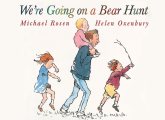Susan Young reflects on how encouraging a musical early years can be as simple as putting on a CD…
I often hear people say “I’m not musical”, but when I ask them whether they like music, I find they often listen to it for long chunks of the day; they have CD collections and are enthusiastic and knowledgeable about many different genres. Is that you? In early years education practice, that whole wonderful world of music which we can listen to in recorded form – extremely easily now that it’s downloadable – is rarely incorporated into practice. Using ready-made, recorded, and even live, music is not something that’s given much thought; however, it’s very easy to introduce it to your setting, and to create opportunities for children to initiate their own listening.
In a busy London nursery, two four-year-old children sit at a table and look through a collection of CDs in a box. There are about 10 CDs representing many different styles of music. They discuss and choose which one they might listen to and then place it in the CD player. They both listen through headphones so that their activity does not disturb the rest of the room. They flick through some of the tracks, grimacing at one, but then find one they listen to for longer, bobbing their heads in time and smiling at one another. Julie, one of the members of staff, noticed them enjoying the music and came by to ask if she could ‘listen in’ to their music. She then talked briefly to the children about the style of music using simple language – it was fast music and quite loud, with lots of violins playing. The children had had a visit from a violinist so they were able to pick out a photo of their violinist from a number of cards set out on the same table.
● Being able to choose music and listen to it through headphones was one of a number of free-choice activities in this nursery. As with any free-choice activity, the practitioner noticed what they were doing and then found ways to support and extend it.
● Recorded music can be the stimulus for dancing and moving. Again, all that’s needed is a music player, a space – indoor or outdoors. A mirror or props such as scarves or hats help to stimulate interesting movement.
● Being at nursery, particularly for long periods of time, can be tiring for young children and opportunities for them to relax and rest are important. Many nurseries build these in to the day. Quiet, soothing music can be a valuable way to create an atmosphere of calm. Providing a small enclosed, cushioned space to relax, rest, listen at other times of the day can be important for children who want to ‘take time out’ from the busy activity. Small digital players were provided in the quiet space at one nursery with ear buds for listening.
Josh is a jazz saxophonist who is visiting a nursery in Birmingham for one day a week over a six-week project to play with and for the children. The children have small plastic saxophones to play too. There are enough for the children to have one each and not swap about. (At the end of the day they are soaked in sterilising fluid.) As Josh plays to them, the children pretend to play too. It doesn’t sound chaotic, for the children’s saxophones are quiet in comparison with the real sax. Josh improvises; he plays music to fit with the children’s interactions with him, being musically playful.
A practitioner makes a video recording of his jazz playing, and when Josh is not there she plays it back through the interactive whiteboard. The children enjoy watching and listening to his playing, talking about it animatedly with their practitioners.
● Video recordings of musicians, perhaps with dancers as well, performing provide another rich listening opportunity for children. Music is often a visual as well as an audio experience. Again, at this nursery, music performances on DVD were played through the interactive whiteboard.
● Karaoke is another form of music listening and joining in. One nursery set up a small stage with microphones and karaoke tracks. The children enjoyed singing and moving to the songs. Staff there discussed whether they would use karaoke pop songs or nursery rhymes for the children. They compromised with a selection of both and went on to try to find a wide range of different styles of songs.
At first: Even quite young babies will be attentive to music and their mood can be changed – being soothed by calming music, or becoming excited when they hear lively music. If the music is noisy when they’re tired, they can become upset. There is research evidence to show that they’re familiar with how the music of their own culture sounds, having heard it all around them. In one experiment, newborn babies are shown to turn their heads when they hear the theme music of their mother’s favourite soap opera because they recognise the music.
At a mother and baby music class, babies lay on the floor in a small circle while mothers held a piece of see-through voile fabric over their heads – wafting it up and down to gentle, drifting music. The advantage of voile is that the mothers’ faces can be seen through it.
This activity is illustrated in a video clip. Click on the section ‘stage 2’. This web page also has four downloadable hand-outs to accompany music and mother/baby classes.
However, there are also ideas circulating in early years practice that listening to music, in particular Mozart, can increase intelligence. These ideas are very exaggerated interpretations of a tiny set of experiments that showed that students could do shape puzzles more efficiently after they’d listened to Mozart. Students are not babies; shape puzzles represent just one tiny skill, and now people are fairly sure that it was just generally being made more alert by music listening that resulted in the students doing better. Some very carefully controlled experiments with older children do seem to suggest that learning in music can help skills in other areas, but not enough to really be significant.
It certainly does no harm to listen to classical music as long as we don’t perpetuate incorrect ideas about increases in intelligence. (There are some commercial approaches to music for young children that try to ‘sell’ their products on false claims that music makes babies smarter – always be sceptical!)
Then: Toddlers enjoy music enormously and when listening to music they enjoy will often bounce: the typical knees bend, bouncy movement. They can show distinct preferences for certain types of music over others, although at this stage children are what we called ‘open eared’ and will be interested in all types of music. This is an important time to introduce them to the many styles of music they may not hear at home.
They can also take part in simple, semi-structured activities involving recorded music, such as tapping sticks on the floor in time to music and stopping at a signal or jumping up and down to certain parts of the music and then sitting down to listen.
And later: Children can listen with more attention and can apply simple vocabulary to describe what they’re hearing. They enjoy moving and dancing to music, and taking part in more structured listening activities such as picking out changes in the music. In my early years setting I found that recorded story books were an important source of music listening as well.
Tip: What better way to make contact with families than through their music? Ask each family to contribute a piece of their favourite music. They could even provide some information about ‘their’ music and why it’s important to them. Better still, some parents may play a musical instrument and be willing to perform to the children.
Introduce a range of musical experiences to your setting…
CDs or digital
Try to collect a very wide range of music:
● Geographic range – British, Irish, European countries, South Asian countries, African countries
● Historical range – medieval, classical, modern
● Style range – jazz, pop, classical, traditional, ‘world’ music
● Purpose range – calming, dancing, marching, working music
Singalong and Story books with songs and music
Barefoot Books have a wide selection including Magic Train Ride; The Journey Home from Grandpa’s; The Animal Boogie.
Live performance
Increasingly orchestras and other music groups offer live music experiences for early years children. Don’t think formal concerts! These are performance occasions specially designed to be engaging and interactive musical experiences. Many orchestras and music organisations also have programmes in which players will visit the setting to play with children and perform live music to them, but again, in ways which are playfully interactive. Here are just a few examples:
● Wigmore Hall Chamber Tots programme (http://www.wigmore-hall.org.uk/learning/in-the-community/chamber-tots)
● London Symphony Orchestra: Discover
● Sage Gateshead early years and family programme
● Royal Liverpool Philharmonic Orchestra: Learning
Youth Music
Youth Music is a charity which promotes and funds musical experiences for young children. Visit youthmusic.org.uk for information and opportunities to apply for funding to run your own music projects. Youth Music are keen to receive applications by early years settings to support early years music work.
Susan Young is senior lecturer at the University of Exeter and also a freelance consultant, evaluator and researcher specialising in early years arts and education projects. Read more from Susan on making music meaningful.

Going on a Bear Hunt activities – Easy preschool ideas
Editors picks

STEM learning through play
Editors picks

Reflective practice – How to use it in Early Years
Editors picks
